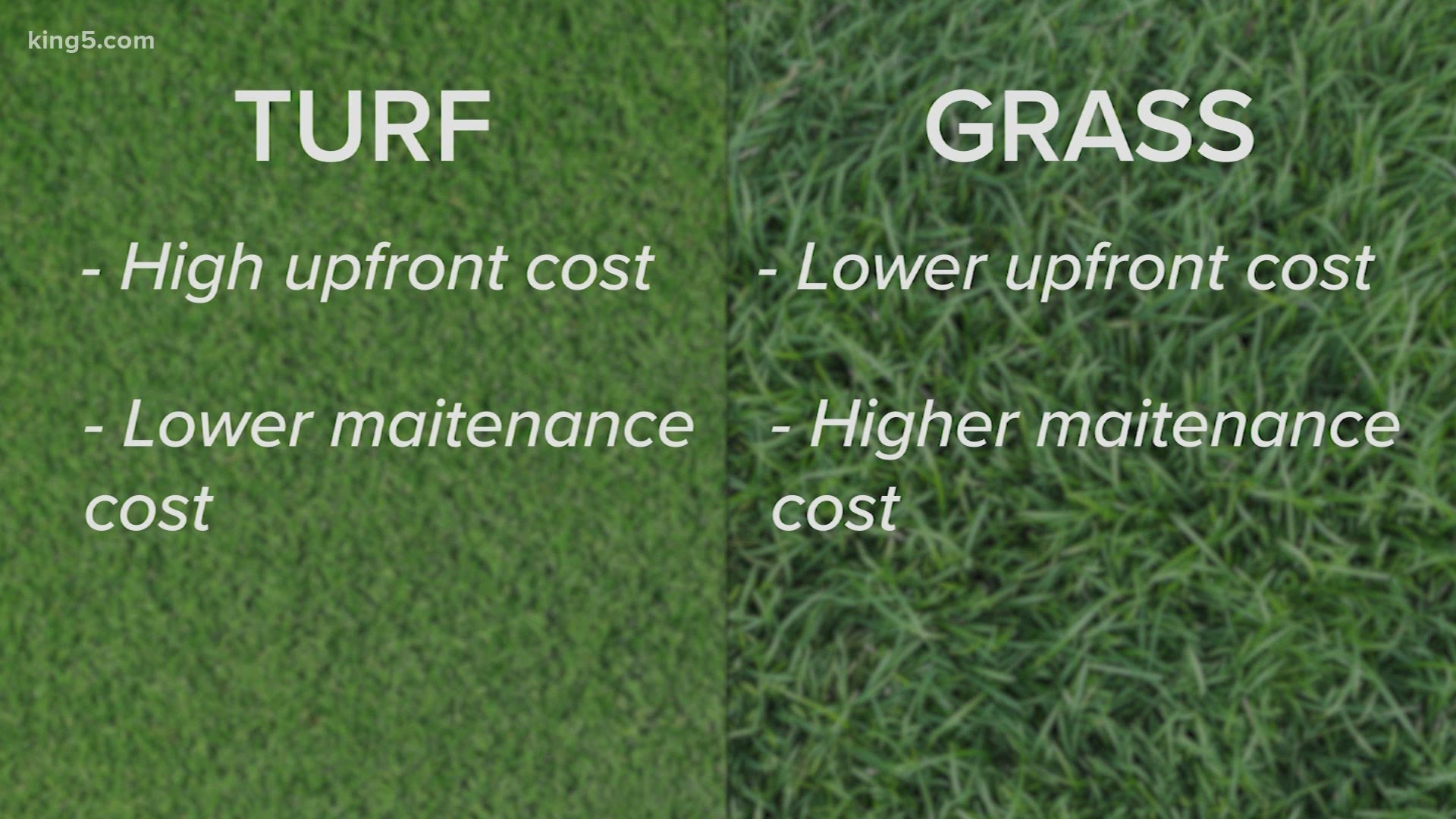Almost half of National Football League stadiums, including CenturyLink Field the home of the Seattle Seahawks, use artificial or synthetic turf. That also goes for the majority of college football and many high school stadiums.
THE QUESTION
But, when it comes to your backyard, is it better to use natural grass or artificial turf?
THE ANSWER
It's not an easy yes or no, as things like money, time and the environment are at play.
WHAT WE FOUND
When it comes to cost, the answer depends on time.
Similar to a hybrid car, you'll pay a lot more on the front end for artificial turf, but there's no upkeep. That means after about seven years, you'll start saving money, compared to the family that has to keep fertilizing, cutting and watering their lawn to keep it green.
One prominent artificial turf company estimates that over 25 years, the cost of care for a 1,000-square foot lawn is between $10,000 to 15,000 for artificial turf, and $38,000 to 41,000 for natural grass.
But the cost to the environment is immediate, even if your lawn itself is small.
"Your backyard, if you aggregate that across all the United States… you're talking about a really big system," said Dr. Sally Brown, a nationally-renowned soil specialist at the University of Washington.
She added that the impact of replacing grass with turf is not about the size of your lawn, but about how much the ecosystem depends on it.
"The soil underneath tends to be really rich and very high in carbon, and soil is a great way to store carbon," said Brown.
On top of the carbon, Brown said the mere presence of grass helps the worms, birds, the air and even water runoff systems.
She said unless you live in a desert like Palm Springs, the minor environmental benefits of artificial turf, such as it never needs watering and you're never burning gas with a lawnmower or using pesticides, are easily outweighed by the ecological downside.
"It’s not just that the plastic turf costs five tons of co2 versus the lawn costs 4.7 tons of co2," said Brown. "It's all the other benefits that you get from having a natural system or at least a little bit of a natural system versus plastic."
As for sports stadiums, many of which use artificial turf, Brown said their dependence on appearance and their relatively small acreage makes their actual impact minimal.
When it comes to your home, artificial turf will always look great, and long-term, it can save you cash. But when it comes to the environment, we can verify, natural grass is the way to go.

